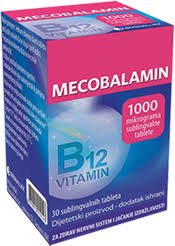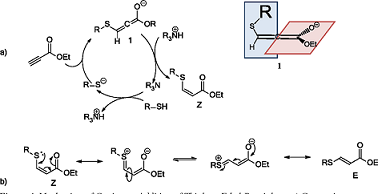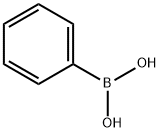Correlational research of Phenylboronic acid
Nov 12,2019
Phenylboronic acid or benzeneboronic acid, abbreviated as PhB(OH)2 where Ph is the phenyl group C6H5-, is a boronic acid containing a phenyl substituent and two hydroxyl groups attached to boron. Phenylboronic acid is white powder and is commonly used in organic synthesis. Boronic acids are mild Lewis acids which are generally stable and easy to handle, making them important to organic synthesis.
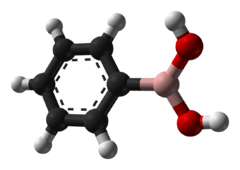
Properties
Phenylboronic acid is soluble in most polar organic solvents and is poorly soluble in hexanes and carbon tetrachloride. This planar compound has idealized C2V molecular symmetry. The boron atom is sp2-hybridized and contains an empty p-orbital. The orthorhombic crystals use hydrogen bonding to form units made up of two molecules.These dimeric units are combined to give an extended hydrogen-bonded network. The molecule is planar with a minor bend around the C-B bond of 6.6° and 21.4° for the two PhB(OH)2 molecules.
Correlational research
Purpose: Phenylboronic acid (PBA) is a synthetic ligand containing boron atoms interact with N-acetyl groups and diol groups of mucins or other biomolecules to form a complex at neutral and weakly basic environments (at pH 7-9) such as that of the ocular mucosa (pH7.8). It is hypothesized that polymers comprising of PBA may be useful in enhancing mucoadhesion, thus improving ophthalmic drug bioavailability and enhancing site specific targeting. In this study, PBA was employed to modify hydrogel ophthalmic materials to enhance mucoadhesion facilitating drug delivery to the eye or interacting with mucoadhesive wetting agents, creating a reloadable system to increase contact lens comfort.
Methods: Polymerizable N-acryloyl-m-aminophenylboronic acid (NAAPBA) was prepared and further copolymerized with other hydrogel monomers including HEMA, DMA and NVP using UV initiated free radical polymerization. The hydrogel materials without PBA were prepared as controls. H-NMR was used to confirm existence of acryl group in NAAPBA. Potential for mucoadhesion was examined using I125 labeled mucin. Wetting agent binding was investigated using florescently labelled hyaluronan (HA) and hydroxypropyl guar (HPG). Dexamethasone and atropine were selected as model drugs for releases studies.
Results: Incorporation of 10% NAAPBA into these materials led to a significant increase in mucin adsorption. Atropine and dexamethasone can be released from these materials and the release profiles can be altered by manipulating PBA content. With an increase in PBA content, drug release was slowed and more sustained releases could be achieved. These PBA containing materials also demonstrated interaction with the wetting agents HA and HPG.
Conclusions: PBA was successfully incorporated into pHEMA, PVP and pDMA hydrogels respectively to form transparent modified materials. The materials demonstrated mucoadhesion and showed drug release and wetting agent binding potential.
- Related articles
- Related Qustion
- The widely applications of Phenylboronic acid. Apr 30, 2024
Phenylboronic acid, a non-toxic compound, is a catalyst for an efficient, rapid, and one-pot three-component synthesis of tetrahydrobenzo[b]pyrans in good to excellent yields.
- Phenylboronic acid:Synthesis,reactions May 9, 2023
Phenylboronic acid is a boronic acid containing a phenyl substituent and two hydroxyl groups attached to boron. Boronic acids are mild Lewis acids which are generally stable and easy to handle, making them important to organic synthesis inc
Methylcobalamin is equivalent physiologically to vitamin B12, and can be used to prevent or treat pathology arising from a lack of vitamin B12 intake (vitamin B12 deficiency).....
Nov 12,2019APIEthyl propiolate (ETP) is a compound largely used in organic chemistry and it has been recently applied as a derivatising agent for the thiol group [16–19]. Very recently a new propiolate-based derivatising agent (2-naphthyl propiolate) was....
Nov 12,2019Chemical ReagentsPhenylboronic acid
98-80-6You may like
Phenylboronic acid manufacturers
- Phenylboronic acid
-
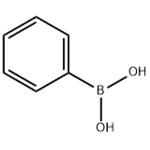
- 2025-11-09
- CAS:98-80-6
- Min. Order:
- Purity: 0.99
- Supply Ability:
- Phenylboronic acid
-
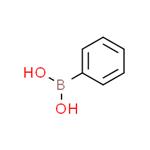
- $130.00 / 100g
- 2025-11-08
- CAS:98-80-6
- Min. Order: 100g
- Purity: 0.99
- Supply Ability: 100kg
- Phenylboronic acid
-

- $99.00/ kg
- 2025-11-07
- CAS:98-80-6
- Min. Order: 0.001kg
- Purity: 99%
- Supply Ability: 5000




